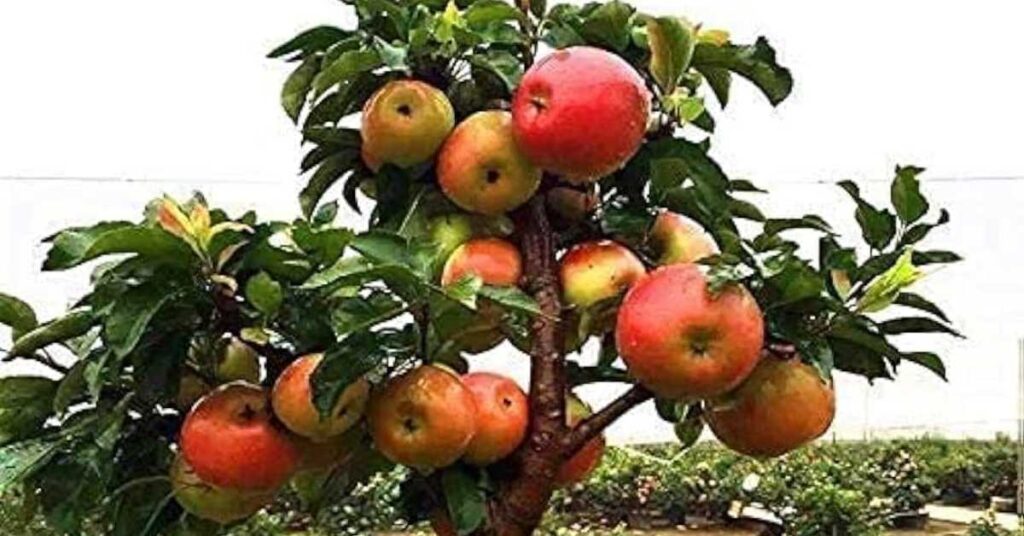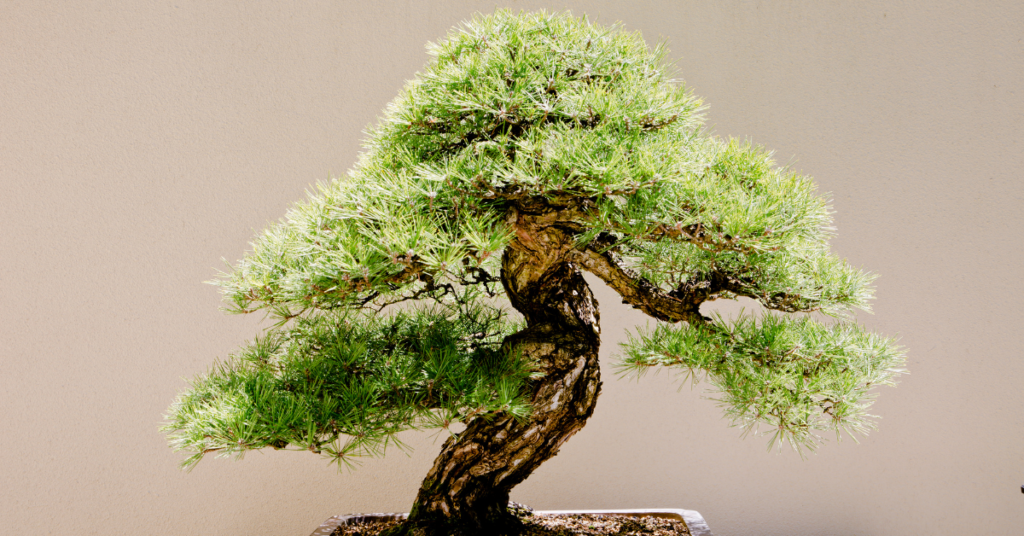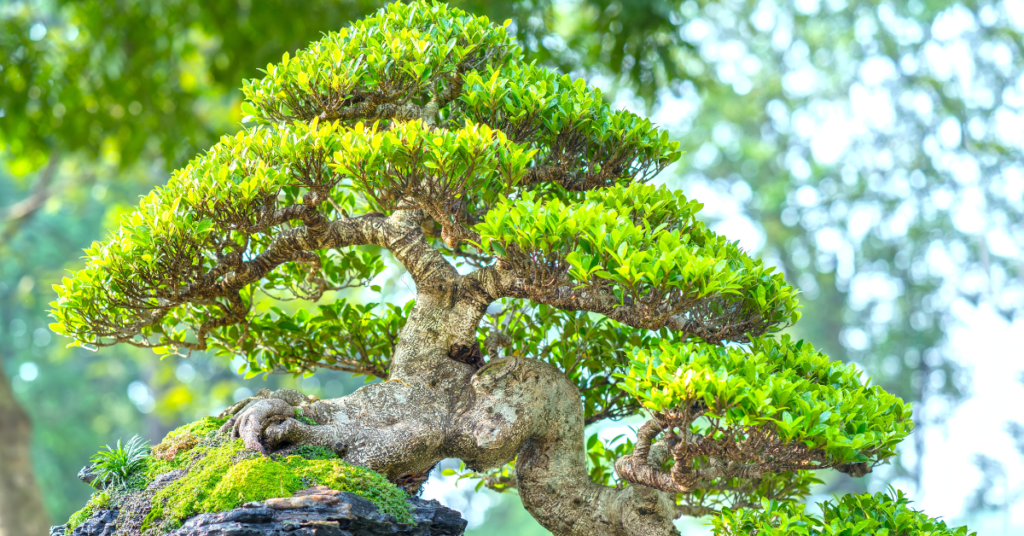Have you ever wondered if you can bonsai an apple tree? Well, the answer is yes! Bonsai is not just limited to traditional trees, but can also be applied to apple trees.
In this article, we will guide you through the process of understanding the art of bonsai, choosing the right apple tree variety, pruning and shaping techniques, potting and repotting steps, and how to care for your bonsai apple tree.
Get ready to embark on a fulfilling journey of bonsai with your very own apple tree!
Key Takeaways
- Bonsai originated in China and was refined in Japan.
- Grafting techniques can be used to create miniature apple trees for bonsai.
- Pruning and shaping techniques are crucial for achieving harmony, balance, and naturalness in bonsai.
- Regular watering, fertilizing, and monitoring for diseases and pests are essential for the health of apple bonsai trees.
Bonsai Basics: Understanding the Art
To fully understand the art of bonsai, you’ll need to grasp the fundamental principles that govern its practice. Bonsai, which translates to ‘tray planting,’ originated in China over a thousand years ago. It was later refined and popularized in Japan, where it became deeply rooted in their culture. The history of bonsai is a testament to the dedication and skill required to create these miniature masterpieces.
Throughout the centuries, many famous bonsai artists have emerged, each leaving their unique mark on the art form. One such artist is Saburo Kato, who played a crucial role in spreading bonsai internationally and founded the World Bonsai Friendship Federation. Another renowned artist is John Naka, whose bonsai creations have inspired countless enthusiasts worldwide.
Understanding the principles of bonsai is essential to creating and maintaining these living artworks. The art of bonsai focuses on achieving a sense of harmony, balance, and naturalness. It involves meticulously pruning and shaping the tree to create the illusion of age, as well as carefully selecting the appropriate container and soil.

Choosing the Right Apple Tree Variety
When choosing the right apple tree variety for bonsai, consider the size and characteristics of the tree that will complement the art form. Grafting techniques can be used to create miniature apple trees suitable for bonsai. The most common method is called whip and tongue grafting, where a scion from the desired apple tree variety is joined to the rootstock. This allows for control over the size and shape of the bonsai tree.
There are several apple tree varieties that are well-suited for bonsai. The ‘Dwarf Golden Delicious’ is a popular choice due to its small size and attractive yellow fruit. The ‘Dwarf Fuji’ is another option, known for its compact growth habit and sweet, crisp apples.
In terms of soil requirements, apple trees prefer well-draining soil that’s slightly acidic. A mixture of bonsai soil, perlite, and peat moss can provide the ideal growing conditions. It’s important to ensure that the soil doesn’t become waterlogged, as this can lead to root rot. Regular watering and fertilizing is crucial for the health and growth of the apple bonsai tree.
Pruning and Shaping Techniques for Bonsai
Continue sculpting and maintaining your apple bonsai tree by employing effective pruning and shaping techniques.
Pruning is an essential part of bonsai cultivation as it helps maintain the desired size and shape of the tree while promoting healthy growth. There are various pruning techniques that you can use to shape your apple bonsai tree.
One technique is called ‘pinching,’ which involves removing the tips of new growth to encourage branching and denser foliage. This technique is especially useful for promoting compactness and creating a more refined appearance.
Another technique is ‘thinning,’ which involves selectively removing branches to create an open structure and improve air circulation. Thinning helps prevent overcrowding and reduces the risk of diseases.
When pruning your apple bonsai tree, it’s important to use sharp and clean tools to make precise cuts. Regular maintenance pruning should be done during the tree’s dormant period, typically in late winter or early spring. However, some corrective pruning may be necessary throughout the year to address specific issues.
In addition to pruning, shaping techniques can also be used to create the desired form of your apple bonsai tree. Wiring is a common technique where aluminum or copper wire is carefully wrapped around branches to guide their growth and create elegant curves. It’s important to be gentle while wiring to avoid damaging the tree.
Potting and Repotting: Essential Steps for Success
To ensure the continued health and growth of your apple bonsai tree, it’s essential to understand the steps involved in potting and repotting. Proper potting and repotting techniques are crucial for the overall well-being of your bonsai tree, as they provide the necessary support and space for root growth and nutrient absorption.
Here are some important steps to follow:
- Selecting the right pot: Choose a pot that’s appropriate for the size and style of your apple bonsai tree. The pot should have good drainage holes and be slightly larger than the current root system to allow for future growth.
- Repotting mistakes to avoid: Avoid common repotting mistakes such as using the wrong soil mix, disturbing the root system excessively, or repotting at the wrong time of year. These mistakes can cause stress to the tree and hinder its growth.
- Timing: Repot your apple bonsai tree during the dormant season, typically in early spring or late winter. This allows the tree to recover quickly from the repotting process.
- Removing the tree from the current pot: Gently remove the tree from its current pot, taking care not to damage the roots. Use a root rake or chopstick to loosen any compacted soil.
- Pruning the roots: Trim back any long or damaged roots before repotting. This encourages new root growth and helps maintain a healthy root system.
Caring for Your Bonsai Apple Tree
To care for your bonsai apple tree, there are several important steps to follow.
First, watering is crucial for the health of your tree. It helps maintain the right moisture levels in the soil. Regularly check the soil by inserting your finger about an inch deep. If it feels dry, it’s time to water. Use a watering can with a fine nozzle to gently water the tree, ensuring the water reaches the roots. Avoid overwatering, as it can lead to root rot and other diseases.
In addition to watering, fertilizing your bonsai apple tree is essential. Use a balanced liquid fertilizer, diluted to half the recommended strength, and apply it every two weeks during the growing season. This will provide the necessary nutrients for healthy growth and development.
Another important aspect of care is monitoring for common apple tree diseases such as apple scab, powdery mildew, and fire blight. Regularly inspect the leaves, branches, and trunk for any signs of disease or pests. If you notice any issues, take immediate action to prevent further damage. Consult a bonsai expert or horticulturist for guidance on appropriate treatments and preventive measures.
Troubleshooting Common Bonsai Issues
If you encounter any common bonsai issues, such as pests or diseases, you can easily troubleshoot them by following these simple steps.
- Identify the problem: Take a close look at your bonsai tree and try to identify any signs of pests or diseases. Common pests in bonsai trees include aphids, spider mites, and scale insects. Diseases such as powdery mildew and root rot can also affect your tree’s health.
- Take immediate action: Once you have identified the issue, it’s important to take immediate action to prevent further damage. Remove any pests manually, using tweezers or a soft brush. Treat diseases with appropriate fungicides or pesticides, following the instructions carefully.
- Adjust the environment: Bonsai trees thrive in specific environmental conditions. Ensure that your tree is receiving the right amount of sunlight, water, and humidity. Make any necessary adjustments to provide optimal conditions for your tree’s health.
- Revive a dying bonsai tree: If your bonsai tree is showing signs of decline, it may be possible to revive it. Start by identifying the cause of the decline, whether it’s due to overwatering, underwatering, or improper care. Take appropriate measures to rectify the issue, such as adjusting the watering schedule or repotting the tree.
- Seek professional help: If you’re unsure about how to troubleshoot or revive your bonsai tree, don’t hesitate to seek professional help. Bonsai experts or local nurseries can provide guidance and advice tailored to your specific situation.
Frequently Asked Questions
Can I Bonsai Any Type of Apple Tree?
Yes, you can bonsai certain varieties of apple trees. Pruning techniques are crucial to maintain a small size and create a bonsai shape. Choose dwarf or miniature apple tree varieties for best results.
How Long Does It Take for an Apple Tree to Become a Bonsai?
To create a bonsai apple tree, you must first understand the pruning techniques and bonsai apple tree care. It takes time and patience for an apple tree to become a bonsai, but the end result is worth it.
What Are the Best Tools to Use for Pruning and Shaping an Apple Tree Bonsai?
To shape an apple tree bonsai, the best tools are sharp pruning shears, concave cutters, and wire for training branches. Avoid common mistakes like over-pruning or cutting too close to the trunk. Follow these techniques for optimal results.
Can I Use Any Type of Pot for My Bonsai Apple Tree?
Choosing the right pot for your bonsai apple tree is crucial. You can use a ceramic pot, but make sure it has proper drainage holes and is the right size for your tree’s root system.
How Often Should I Water My Bonsai Apple Tree?
To properly care for your bonsai apple tree, water it when the top layer of soil feels dry. Avoid overwatering, as it can lead to root rot. Fertilize regularly with a balanced formula. Prevent pests and diseases by inspecting the tree regularly and taking appropriate measures.
Conclusion
In conclusion, bonsai apple trees can be a fascinating and rewarding project for those interested in the art of bonsai.
By understanding the basics of bonsai, selecting the right apple tree variety, mastering pruning and shaping techniques, and properly potting and caring for your tree, you can create a beautiful and miniature apple tree that will bring joy and satisfaction.
Remember to troubleshoot any common bonsai issues that may arise to ensure the ongoing health and longevity of your bonsai apple tree.



